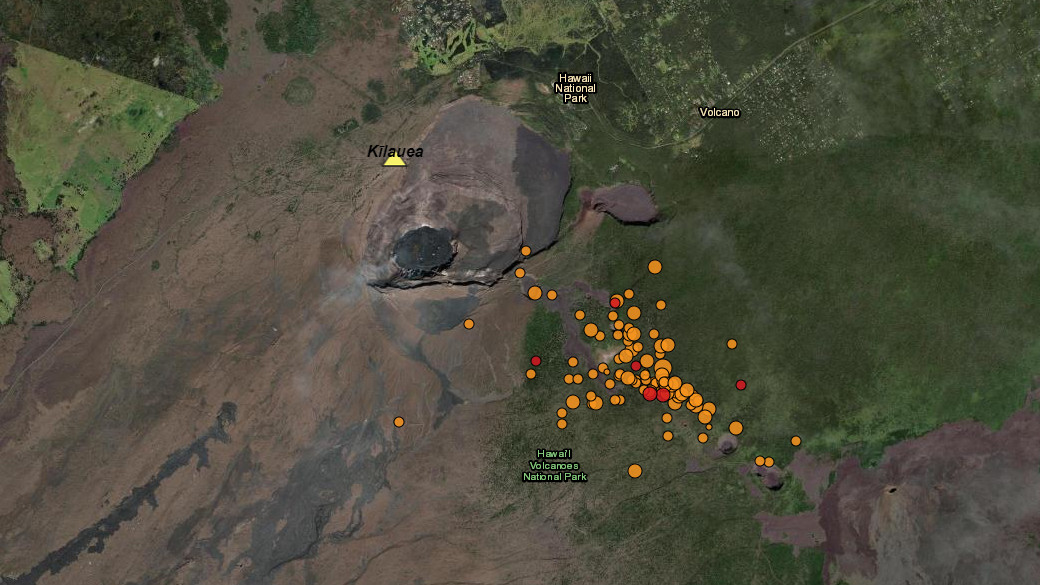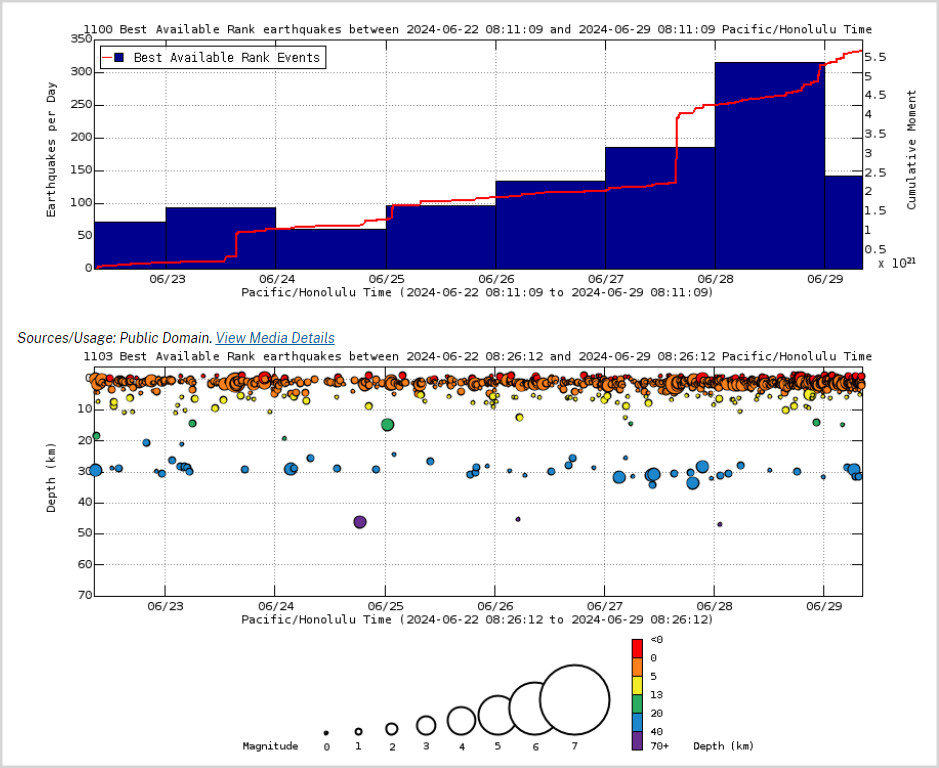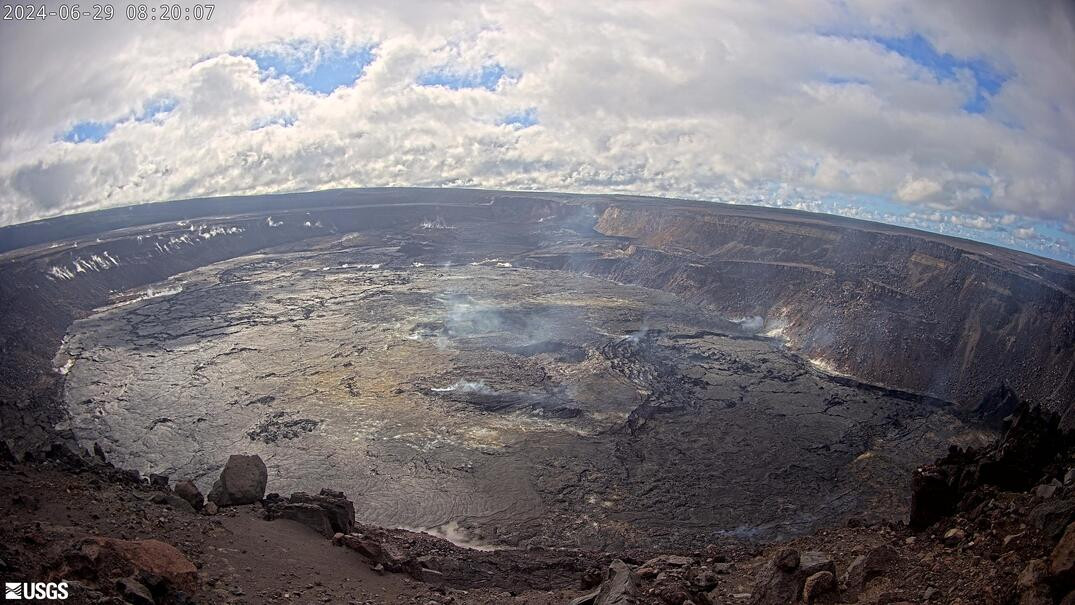
Image from an interactive map by the USGS HVO showing the location of the most recent earthquakes south of the caldera on the East Rift connector.
(BIVN) – Kīlauea is not erupting, and the USGS Volcano Alert Level remains at ADVISORY.
The number of earthquakes at Kīlauea have increased as part of a seismic swarm that began on June 27th. Over 300 earthquakes have been detected beneath the summit over the past 24 hours. The number of earthquakes on Saturday appear to be on pace to surpass the number recorded on Friday, which is triple the rate of just a few days ago.
Rates of inflationary ground deformation in the summit and upper rift zones continue to be moderately elevated.
“Any substantial increases in seismicity and/or deformation could result in a new eruptive episode within or near the summit region,” the USGS Hawaiian Volcano Observatory wrote on Saturday, “but there are no signs of an imminent eruption at this time.”
As of Saturday morning, there were no closures reported within Hawaiʻi Volcanoes National Park due to the moderately elevated behavior.
From the USGS HVO report issued on Saturday morning:
Summit and Upper Rift Zone Observations: There were over 300 earthquakes detected beneath the summit over the past 24 hours, mostly below the south caldera region at depths of 1.5–3 km (1–1.8 mi). This earthquake count is more than triple the rate of several days ago, reflecting a seismic swarm that began with M2.9 and M3.4 earthquakes in the afternoon of June 27. Inflationary ground deformation continues around the summit, but rates have slowed over recent days: tiltmeters at Uēkahuna northwest of the summit and at Sand Hill southwest of the summit each recorded approximately 1 microradian of net inflation over the past 24 hours. The most recent measurement of the summit’s SO2 emission rate was approximately 75 tonnes per day yesterday, June 28.

Above Top: Number of earthquakes per day during the past week (blue bars). The red line is the cumulative moment (energy) release. Bottom: Depth of earthquakes during the past week in the area shown on the map above. Depth is reported relative to sea level, which is equal to a depth of zero on the above plot. On both figures, circle-size represents magnitude, and color indicates depth. (USGS graphs)
Middle and Lower Rift Zone Observations: Rates of seismicity and ground deformation beneath the middle and lower East Rift Zone and lower Southwest Rift Zone remain low. Recent eruptive activity and ongoing unrest have been restricted to the summit and upper rift zone regions. Measurements from continuous gas monitoring stations downwind of Puʻuʻōʻō in the middle East Rift Zone—the site of 1983–2018 eruptive activity—remain below detection limits for SO2, indicating that SO2 emissions from Puʻuʻōʻō are negligible.
Analysis: Following the eruption on June 3, 2024, magma has been repressurizing the storage system beneath Halemaʻumaʻu and the south caldera region, activating earthquakes in the upper East Rift Zone and in the caldera south of Halemaʻumaʻu. At this time, it is not possible to say whether this increase in activity will lead to an intrusion or an eruption in the near future, or simply continue as seismic unrest at depth. Changes in the character and location of unrest can occur quickly, as can the potential for eruption, but there are no signs of an imminent eruption at this time.


by Big Island Video News8:46 am
on at
STORY SUMMARY
HAWAIʻI VOLCANOES NATIONAL PARK - The USGS says there were over 300 earthquakes detected beneath the summit over the past 24 hours, mostly below the south caldera region.